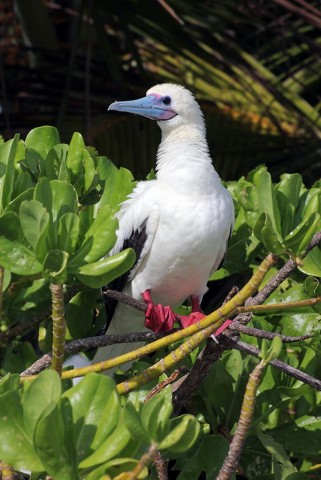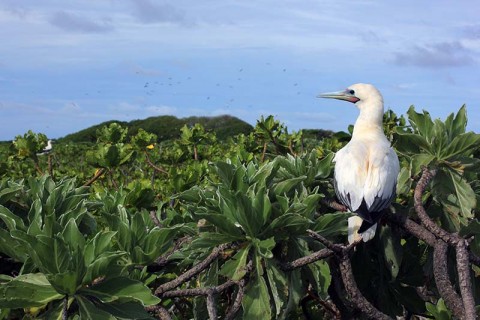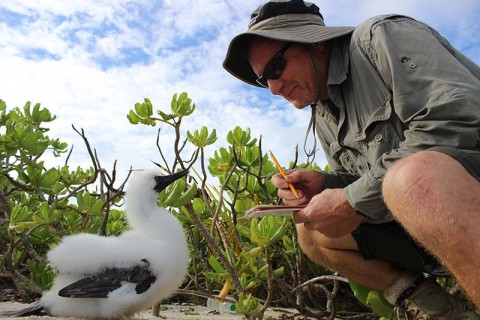BIOT Science Expedition 2014 - Day out from diving - Day 7
Day out from diving

As much as we would like to continue diving all the way through this expedition, safe practice suggests a breather once a week. Today was that day. Instead of diving we ventured ashore with Pete to gain an insight into his work with the bird populations here in BIOT. He describes our experiences below…

“Today we woke to a new experience for those of the science team who have not conducted research in the Chagos before. To date we have only anchored by islands that were rat-infested, this morning we woke anchored off a rat-free island. The contrast was immediate. As dawn broke streams of Lesser and Common Noddy departed the island for feeding grounds. Above them Red-footed Booby were heading purposefully to their deep water feeding areas, alongside were smaller numbers of Brown Booby heading for shallower waters to feed. Frigatebirds glided over looking as though they were inspecting the ship whilst the occasional Wedge-tailed Shearwater lived up to its name as it headed out to sea.
It was a rest day for the divers and they were to head ashore later in the day to feel some terra firma for the first time since leaving Diego Garcia. First, Jon Bailey and I were to spend the morning ashore continuing the long-term monitoring of the breeding seabirds on this IUCN recognised Important Bird Area (IBA). Concurrently Jon Schleyer and Sophie were filming on the island.

There are three senses that are immediately bombarded when coming ashore on a rat-free island when seabirds are breeding, aural, visual and olfactory. We landed next to a breeding colony of Lesser Noddy, some 11,000 pairs. The smell of guano was keen in the air, the hungry calling of chicks and the chattering of parent birds was a cacophony of sound and there were birds literally all around us. After this grand start we walked the circumference of the island stopping along route to measure the density of the other key breeding species, frigatebirds and Brown and Red-footed Booby. It was difficult not to be distracted by the superb photo opportunities of the other wildlife on the island; the endemic sub-species of Argus Meadow butterfly and hawkmoth were both showing well today.

The afternoon was a well earned break on land for the marine scientists. Whilst a “terrestrial-science guided tour” by me was the intent of the afternoon, it was soon apparent that the marine scientists were not only keen to hear about the island environment, they were also keen to further their skills as photographers. Some of the results illustrate today’s blog.”



